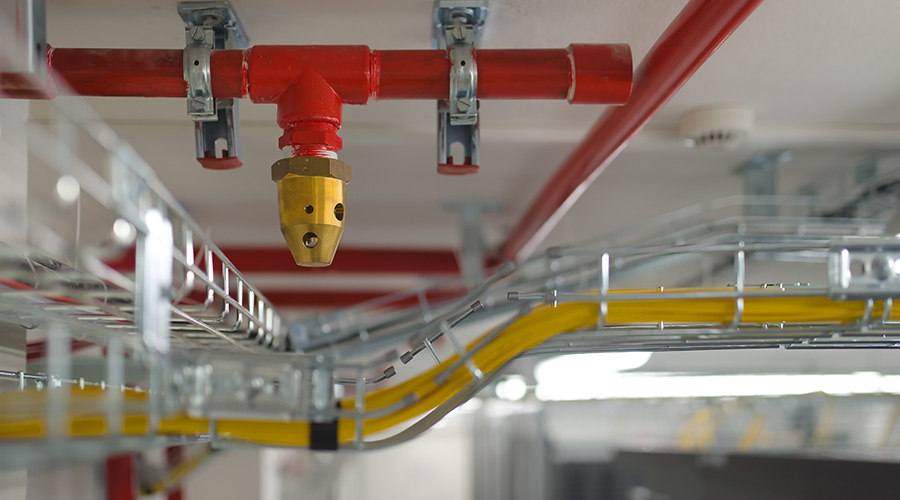Fire Alarms: Five Ways Facility Managers Can Gain From Today's Technology
Changes in technology have made fire alarm systems extremely powerful, easy to program and easy to operate. Twenty years ago, fire alarm systems monitored conventional automatic detection devices (heat or smoke detectors or both) and other basic inputs like manual pull stations and automatic sprinkler water flow switches. These inputs activated non-voice notification appliances, commonly bells or horns. Typically, the information provided to occupants was limited to a general alarm and the information to first responders was, at best, the zone or floor where the alarm had originated.
Today, fire alarm systems are microprocessor-based and can send specifically routed pre-recorded and live voice messages directing occupants to shelter in place or evacuate. The new high-tech systems can monitor "intelligent" smoke detectors capable of discriminating between real, false and nuisance alarms. Some of the new smoke detection devices also integrate real-time video feeds to a central location. In-building emergency voice/alarm communications systems can now serve as mass communication systems capable of providing information and warnings for a wide variety of potential non-fire threats.
What's more, current addressable fire alarm systems, when designed properly, can provide specific room location information. This, in turn, provides first responders, as well as maintenance personnel in a non-fire incident, specific area or room of origin information.
As fire alarm system technology continues to advance, facilities that rely on older systems may miss opportunities to improve important aspects of fire/life safety performance or to solve problems that older systems cannot address. Here are just five benefits of new fire system technology that facility managers should understand.
Reduced Installation, Operating Costs
Upgrading a fire alarm system is a significant investment. But some changes in technology can reduce costs, either for installation or ongoing operations.
For example, addressable technology reduces maintenance costs by providing device-level information that can include dirty detector indication, high ambient temperature levels and, when coupled with fault isolation, the location of faults that previously were very cumbersome and expensive to locate.
There are also economies during installation. Because all of the components of a well-designed system communicate via data transmission, most circuit runs result in less cabling. Microprocessor-based, distributed fire alarm control and amplification systems means that fire alarm systems that previously required large conduit risers and large floor penetrations now require ½-inch or ¾-inch conduit installations, which dramatically reduce installation costs. Because engineers can distribute the network components of new fire alarm and voice communications systems without performance loss, large banks of amplifiers are obsolete, freeing valuable real estate.
Related Topics:














